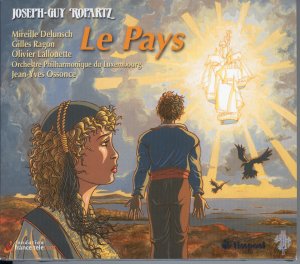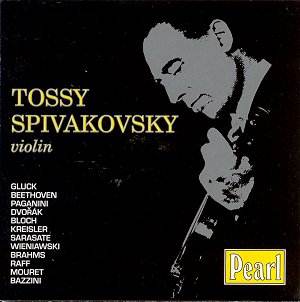 Composer: Joseph-Guy Ropartz
Composer: Joseph-Guy Ropartz
Works: Le Pays, Drame en musique en trois actes et quatre tableaux (1908-10)
Performers: Mireille Delunsch (soprano, Kæthe), Kæthe Gilles Ragon (tenor, Tual), Olivier Lallouette (baritone, Jörgen)
Recording: Orchestre Philharmonique de Luxembourg, Jean-Yves Ossonce
Label: Timpani
Joseph-Guy Ropartz, a prominent figure in the French musical landscape of the early 20th century, crafted “Le Pays” as a poignant meditation on Breton identity, infused with rich lyricism and a deep connection to the land. Premiered in 1912, this opera draws from Charles Le Goffic’s tale “L’Islandaise,” exploring themes of love and loss against the backdrop of Iceland’s treacherous waters, while simultaneously evoking the spirit of Brittany. Ropartz’s music, characterized by its rhapsodic quality, intertwines folk elements with a more sophisticated harmonic language, reflecting the growing nationalism in Brittany during a period marked by cultural upheaval and a quest for regional identity.
The interpretation by Jean-Yves Ossonce and the Orchestre Philharmonique de Luxembourg is both nuanced and vibrant, capturing the operatic essence of Ropartz’s score. Delunsch’s portrayal of Kæthe is particularly striking; her soprano is imbued with a lyrical tenderness that aligns seamlessly with the emotional trajectory of the character. One notable example occurs in the aria in track 4 of CD1, where her voice soars with a plaintive ardor, encapsulating the tragic weight of her love for Tual. Ragon’s Tual is portrayed with a compelling mix of vulnerability and resolve, effectively conveying the character’s internal struggles, particularly as he grapples with his oath to remain faithful to his beloved.
The orchestral prelude, lasting eight minutes, sets the stage with its rhapsodic contours, reminiscent of the tone poems by Paul Ladmirault. Here, Ossonce draws forth a lush, atmospheric sound that invites the listener into Ropartz’s emotive landscape, expertly balancing the orchestral palette without overwhelming the vocal lines. The engineering quality of the recording is commendable, allowing each instrumental detail to emerge clearly, from the shimmering strings to the resonant brass. The intimate soundstage created by Timpani enhances the sense of immediacy, fostering a connection between the performers and the audience.
Comparatively, “Le Pays” occupies a distinct place within the canon of early 20th-century French opera, often overshadowed by more prominent works. However, it shares thematic and stylistic elements with Delius’s “A Village Romeo and Juliet” and Boughton’s “The Immortal Hour.” While those works delve into mythic realms, Ropartz remains grounded in the emotional realism of everyday folk—an approach that resonates powerfully, considering the absence of a chorus and the focus on three principal roles. This economy of forces allows for a more intimate exploration of character and theme, making it ripe for revival.
Rich in emotional depth and regional significance, Ropartz’s “Le Pays” is a hidden gem that deserves wider recognition. This recording, with its strong performances and thoughtful interpretations, serves as a compelling introduction to the opera. The confluence of personal tragedy and the natural world, masterfully rendered through Ropartz’s music, invites listeners to reflect on the broader implications of love, loss, and belonging in the context of a rapidly changing cultural landscape. The recording is a significant contribution to the ongoing revival of French operatic repertoire, showcasing Ropartz as a composer of considerable merit and emotional resonance.



